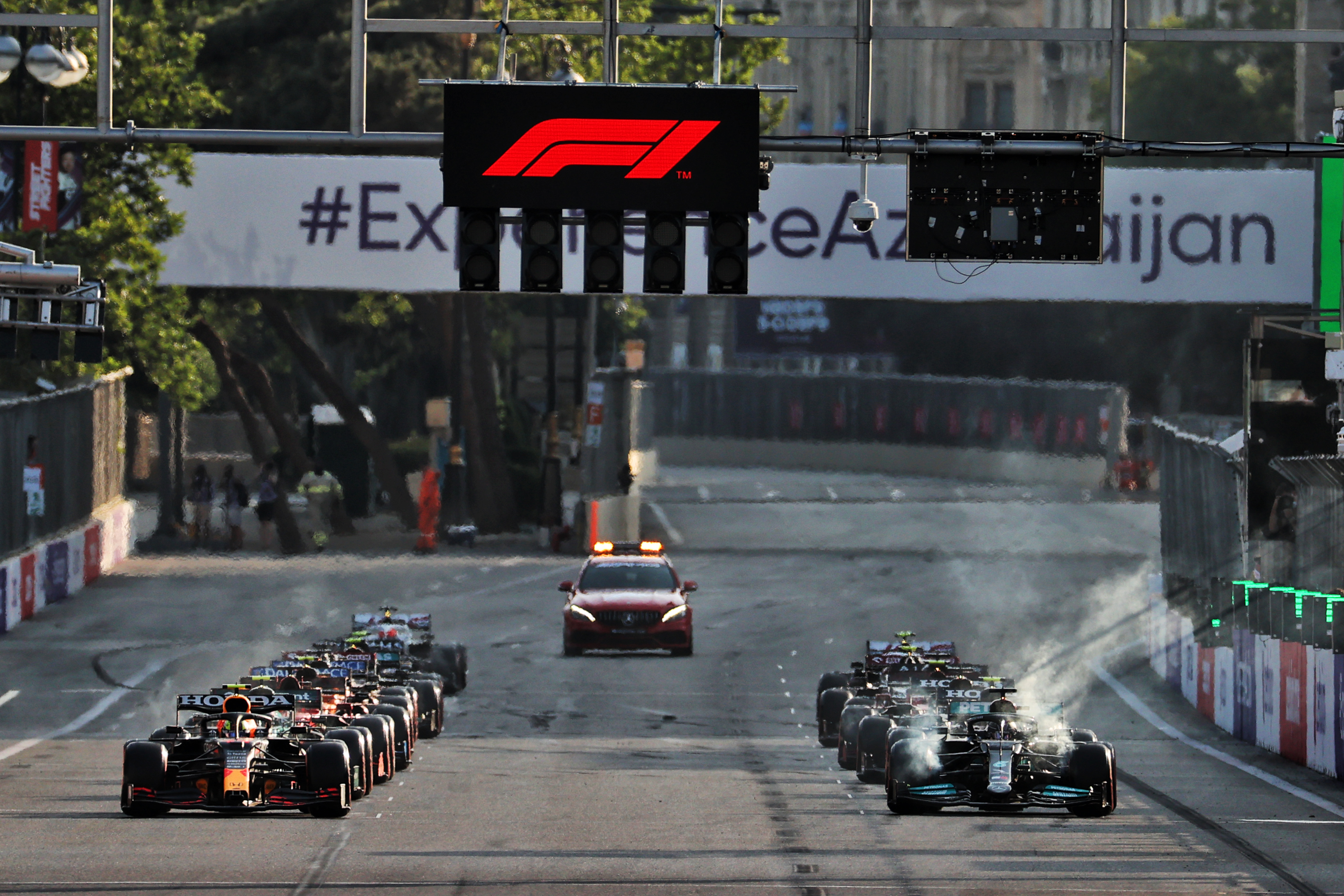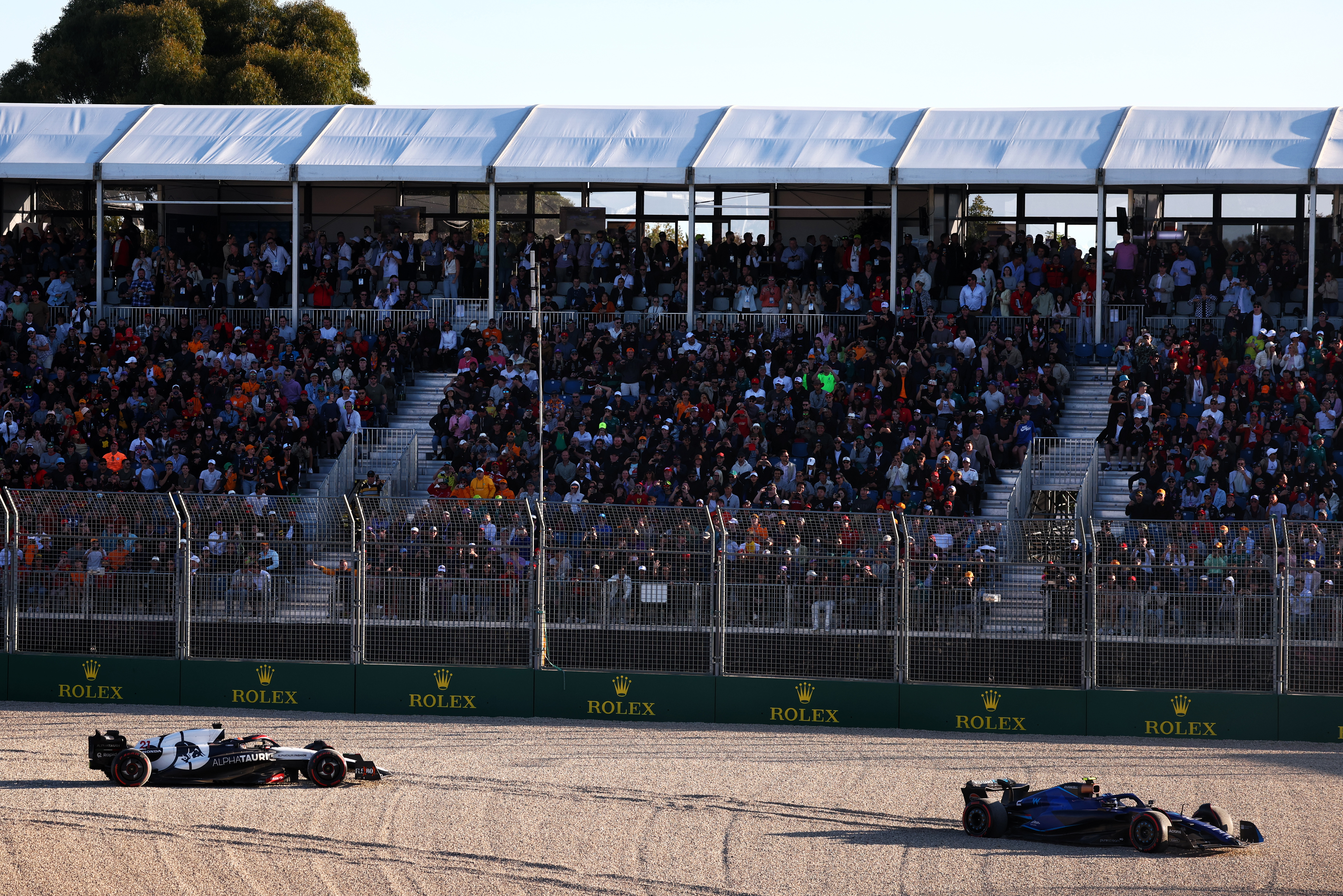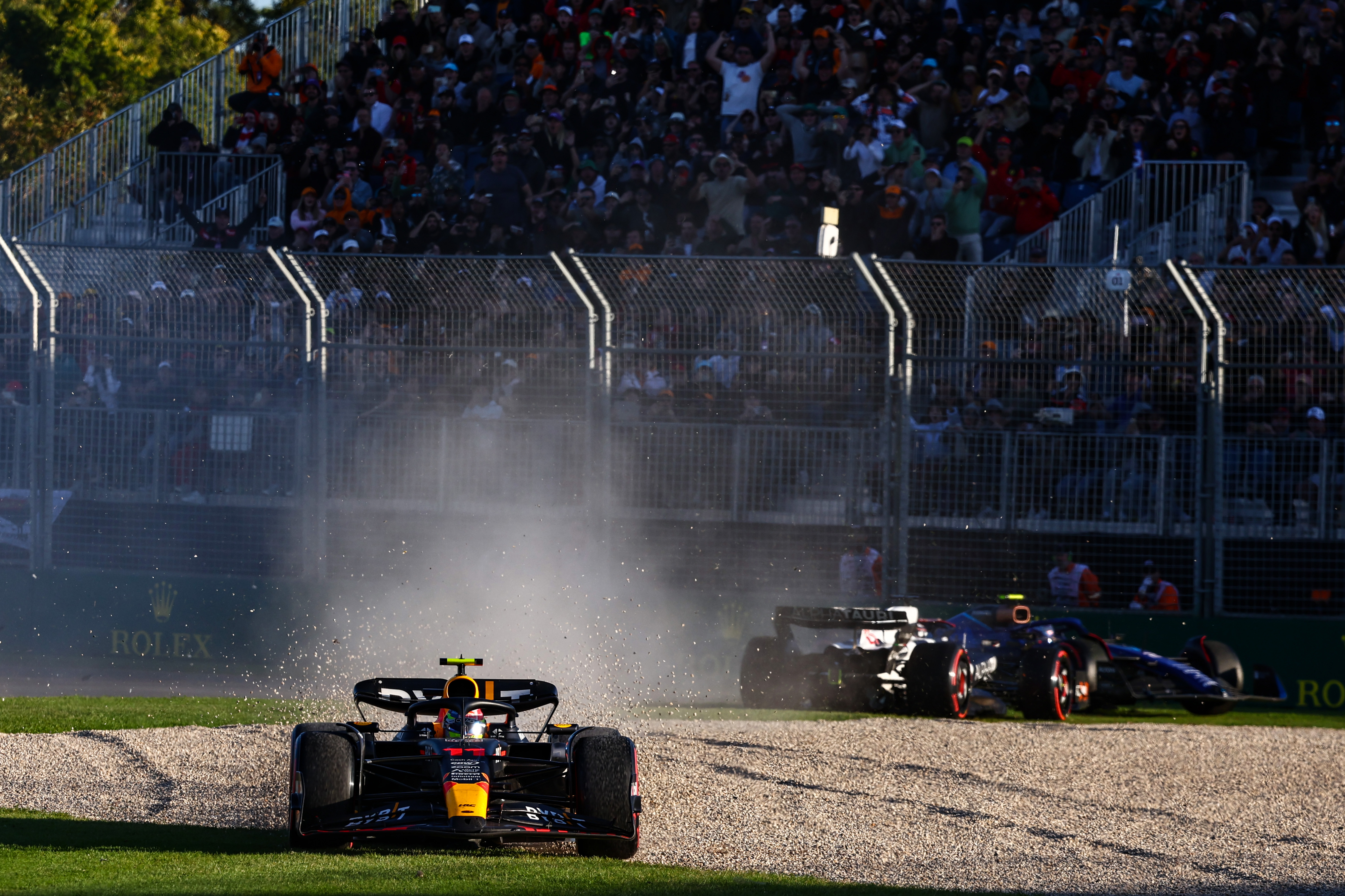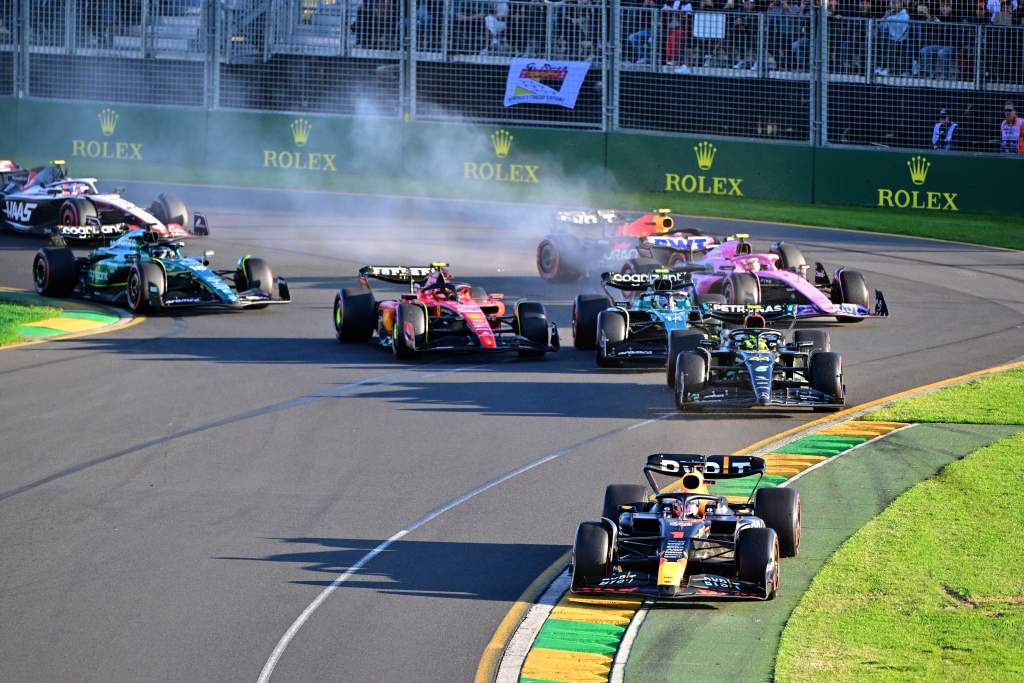Up Next

Races that breed the kind of chaos that marred the Australian Grand Prix inevitably lead to a debate over how well Formula 1 balances ‘the sport’ versus ‘the show’, and if that balance needs to be struck at all.
Those that hate cautions and stoppages of the kind that prompted the controversial and chaotic late restart in Australia tend to feel they are unnecessary and unfair to drivers and teams that have got themselves into strong positions over the rest of the grand prix, create a needless risk, and are a forced injection of late drama.
It’s no surprise that over the last two years in particular, as red flags have become prolific and we’ve seen the rise of the ‘end-of-race sprint’, vocal groups of fans have expressed serious discontent over calls that are seen to be made purely to spice things up.
Sometimes, rather than trying to manipulate more excitement, in earlier phases of the race, there’s just an air of caution around how the FIA operates.
A ‘better safe than sorry’ approach has become increasingly evident: examples this year being the safety car for Lance Stroll’s parked car in Saudi Arabia (when it was not in a dangerous place but race control initially wasn’t sure), and the first red flag in Australia for gravel on the track.
These decisions didn’t make each race better, they made them worse. Swapping natural and more intriguing strategic set-ups for the cheap, short-term thrill of another race start would not be a worthwhile trade in terms of entertainment value. And that’s not why they happen.
Such examples should not be confused with the much more obvious and genuinely deliberate attempts to control the sporting spectacle – those late red flags, and late restarts, to avoid a race ending behind the safety car or under yellow flag conditions. But they, too, still need to be valid.
A couple of years ago it was established that the collective desire in F1 was to avoid this wherever possible. It coincides roughly with the switch from rolling restarts behind the safety car to full standing starts.

We first saw that manifest itself in the extremity of a late sprint in the 2021 Azerbaijan Grand Prix (merited because of the debris that littered the start-finish straight) and it is this attitude, though hardly the same execution, that led to the huge controversy that was that year’s season finale in Abu Dhabi.
In Australia, the controversial late red flag was perfectly valid given the metallic shards of Kevin Magnussen’s broken rear wheel that littered the track. There was time to try a final restart, which is what F1’s stakeholders have made it clear should be a priority, and it allowed the debris to be cleared up safely (less of a guarantee had that been done with the race finishing behind a safety car).
It satisfied the objective to end a race with racing, which in its simplest form is a reasonable endeavour. It is sort of F1’s equivalent to injury time in football, or a game clock that pauses when the ball is out of bounds in basketball.
What we should not pretend is that it’s for anything other than the show. It’s done to avoid disappointing fans trackside and watching at home on television, and to ensure F1 is not diminished as a spectacle but rather the opposite.
It’s a false crescendo with an influx of jeopardy and the possibility of a win-it-at-the-death scenario. Keep the fans watching to the end, make the finish a thrill, squeeze every last drop out of the old adage that ‘it ain’t over till it’s over’.
Some fans hate this. But check the numbers, check the engagement, and the reality is that the vast majority don’t switch off because they think it’s fake – quite the opposite. It’s not the purest form of motorsport, but it’s a mix of sport and drama. And that’s not just something the ‘Netflix generation’ want, it’s something a lot of fans clearly respond well to.
That is, for better or worse, the reality F1 operates in and has happily encouraged while chasing a bigger audience. Late red flags to crowbar in restarts fits that perfectly and is something that F1 plainly wants.
So instead of making futile arguments against such a push, perhaps the better thing to scrutinise is when any such intervention is acceptable, and how far it should go.
There should be some give and take, and a middle ground between demanding a grand prix be a purely sporting spectacle (which can be inherently boring) and sending F1 down a route to becoming far too fabricated for its own good.
The FIA has a great burden to shoulder in late-race scenarios like in Melbourne. It must act with safety as its primary interest (because the fear of failing to prevent something bad from happening is genuinely enormous) while also attempting to cater to the universally agreed aim of facilitating a racing finish.
This leads to the pretty clear contradiction of red-flagging a race for safety reasons and therefore setting up a significantly more dangerous situation with a full race restart. Which some critics have latched onto. But as long as this is not done recklessly it should be fair game. And Australia was not reckless race management.
For every argument that stakeholders are sending lambs to the slaughter by putting drivers out on cold brakes and tyres for ‘the sake of the show’, there’s a counter-argument along the lines of ‘these are meant to be the best drivers in the world’. Not everyone made a calamitous error at the restart in Melbourne – just a few that, bluntly, didn’t do a good enough job.

Of course, there is a difference between these starts and the normal one at the very beginning of a grand prix: the formation lap. The lead car sets the pace at a normal start but the field is stuck behind the safety car before a restart, as it leads the train out of the pits.
If a normal formation lap at the start of the grand prix, on full tanks of fuel, is enough for an acceptable level of risk then why not facilitate the same thing at a restart?
After all, the goal should not be to engineer chaos. The start of a grand prix is one of the most exciting moments of any race already. Simply replicating that should be enough to fulfil any entertainment demand.
Where caution is also merited is in assessing whether anything could or should be done to prevent a non-racing finish when a red flag occurs too late for the race to resume within the original distance under the current rules, as it was with the final red flag in Melbourne.
This is known to be something F1 disliked last weekend and no doubt some fans were unhappy to wait around for ages knowing they were not going to see an actual finish – just a formality.
Of course, in Australia any rule that allowed for a final-lap shootout would have meant forcing another restart. And no doubt fuelled further complaints about how desperate F1 is to put the spectacle first. So, we return to the key premise of striking the right balance.
F1 being what it is, we just cannot expect the entertainment side of the championship to be ignored. Just like any elite sporting competition its ecosystem depends on fan interest, and it can’t just be driven 100% by sporting demands.

But a line should be drawn somewhere. Unless there is a dramatic change in how races work – abolishing the maximum race time of three hours for example, not being dependent on light, and/or allowing for refuelling – then even the strongest critics of races that finish under safety cars or cautions have to accept that races DO have to finish at some point.
If there’s time to get back racing, great. If not, that’s just how it goes – the show be damned.
No sport is so ‘pure’ as to be immune to the demand for excitement. F1 just has to be wary of how far it wants to go to manufacture it.









